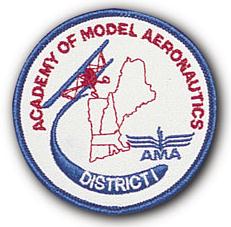Choosing Your Initial RC Model Aircraft:
- Type of Aircraft:
-
- High-Wing Trainer: This is the most highly recommended type for beginners. High-wing aircraft are inherently more stable and self-correcting, making them easier to control and forgiving of minor pilot errors. They typically have a slower stall speed and gentle handling characteristics. Examples include the HobbyZone AeroScout S 2, E-flite Apprentice STS, and FMS Ranger.
- 3-Channel vs. 4-Channel:
-
- 3-Channel (Throttle, Elevator, Rudder): Simpler to learn initially but limits maneuverability (no ailerons for banking). Often found in very basic trainers.
- 4-Channel (Throttle, Elevator, Ailerons, Rudder): Provides full control for coordinated turns and is the standard for most RC aircraft beyond basic trainers. It's generally better to start with 4 channels as you'll progress faster.
- Material:
-
- EPO (Expanded Polyolefin) Foam: This is the preferred material for beginner aircraft. It's lightweight, durable, and relatively easy to repair with foam-safe glue and tape after minor crashes (which are common during learning).
- Balsa and Plywood: More traditional materials offering excellent flight characteristics but are more fragile and require more skill to build and repair. Best left for later in your RC journey.
- Size:
-
- Mid-Sized Trainers: Aircraft with wingspans around 40-60 inches are a good starting point. They are large enough to be stable in light winds but not so large as to be intimidating or difficult to transport.
- Ready-to-Fly (RTF) vs. Ready-to-Bind (RTB) / Bind-N-Fly (BNF) vs. Kit:
-
- RTF: Includes everything you need in one box (airplane, transmitter, receiver, battery, charger). This is the most convenient option for absolute beginners.
- RTB/BNF: Includes the airplane and receiver (sometimes servos), but requires you to have a compatible transmitter. This might be suitable if you've already chosen a specific radio system.
- Kit: Requires significant building and component selection. Not recommended for your first aircraft.
- SAFE (Sensor Assisted Flight Envelope) Technology: Many beginner RTF planes come with SAFE technology. This offers features like self-leveling, bank and pitch angle limits, and panic recovery modes, making learning much easier and reducing the likelihood of crashes. This is highly recommended for your first plane.
- Repairability: Consider how easy the aircraft is to repair and if spare parts are readily available. EPO foam models are generally easier to fix.
Choosing Your Initial Radio System (Transmitter and Receiver):
- Included with RTF: If you choose an RTF aircraft, a basic transmitter and receiver will be included and pre-bound (connected). This is the simplest way to start.
- If Buying Separately (for RTB/BNF or future upgrades):
-
- Number of Channels: A minimum of 4 channels is recommended (throttle, ailerons, elevator, rudder). More channels offer the potential to control additional features on more advanced aircraft later.
- 2.4 GHz Technology: Ensure the radio system uses the 2.4 GHz frequency band. This is the modern standard and offers a much more reliable and interference-free connection than older frequencies.
- Range: For typical park flyer and club field flying, most 2.4 GHz systems offer adequate range. However, understanding the manufacturer's specifications is important if you plan to fly larger or faster models in the future.
- Ergonomics and Feel: Choose a transmitter that feels comfortable in your hands. Consider the size, weight, and the placement of the sticks and switches. Some transmitters have adjustable stick tension and length.
- Telemetry: Some more advanced transmitters offer telemetry, which provides real-time data from the aircraft (e.g., battery voltage, signal strength, altitude). While not essential for a first aircraft, it can be a valuable feature as you progress.
- Model Memory: If you plan to own multiple aircraft in the future, choose a transmitter with sufficient model memory to store the settings for each plane.
- Compatibility (for BNF): If you're buying a BNF aircraft, ensure the transmitter you choose is compatible with the receiver in the plane (e.g., Spektrum DSMX/DSM2, Futaba S-FHSS/T-FHSS, etc.).
- Future Expandability: Consider if the radio system can be upgraded with additional receivers or modules if you expand your fleet or get into more specialized types of flying.
- Budget: Radio systems can range in price significantly. For your first setup, a mid-range system from a reputable brand will likely offer a good balance of features and reliability without breaking the bank. Brands like Spektrum, Futaba, and FrSky are popular choices.
Recommendations for a New AMA Member:
1. Start with an RTF (Ready-to-Fly) high-wing trainer aircraft with 4 channels and SAFE technology. This provides the easiest and most supported entry point. The included radio system will be perfectly matched to the aircraft.
2. Focus on learning to fly with the included radio. Once you gain experience and decide to progress further in the hobby, you can then consider upgrading to a more advanced radio system if desired. This allows you to make a more informed decision based on your specific needs and flying style.
3. Join a local AMA-chartered club in the area. The members can offer invaluable advice on local flying sites, suitable beginner aircraft, and radio systems, as well as provide hands-on flight instruction. They can also advise on specific brands and models that are popular and well-supported in the local community. You can find clubs using the AMA Club Finder.


